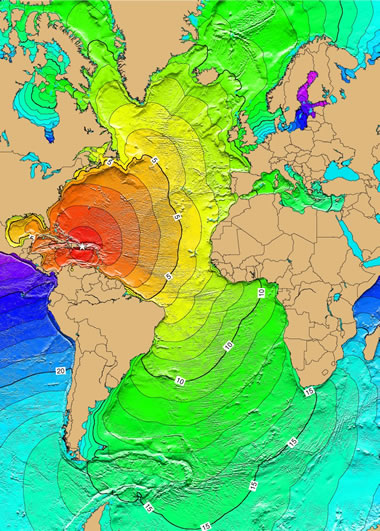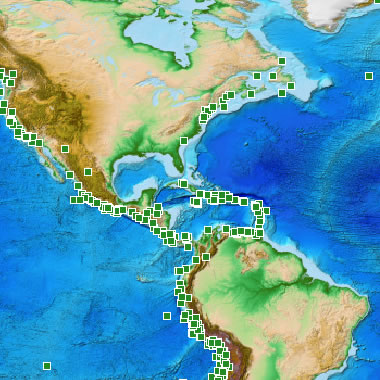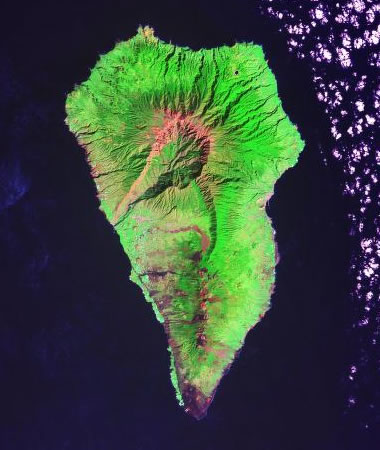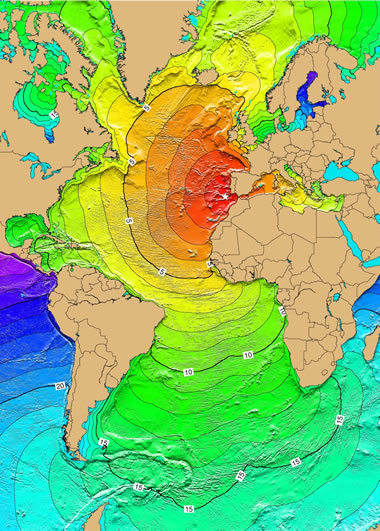Atlantic Ocean Tsunamis
Maps of Atlantic Tsunami Travel Times
Travel Time Maps Composed by NOAA using Tsunami Travel Time Software. Atlantic Ocean Tsunamis: Rare but PossibleA tsunami in the Atlantic Ocean is a rare event. Part of the reason for this low incidence of tsunamis is the lack of subduction zones - the most common source of tsunami-causing earthquakes.Although the incidence of Atlantic tsunamis is low the threat should be taken seriously because millions of people live in low-elevation locations around the rim of the Atlantic basin. The travel time maps below show that once a tsunami is generated the response time for mass evacuation can be uncomfortably short. Subduction ZonesThe only subduction zones in the Atlantic basin are along the eastern edge of the Caribbean Plate and the eastern edge of the Scotia Plate in the South Atlantic. These subduction zones are small, they are not exceptionally active and that accounts for the low incidence of earthquake-generated tsunamis.The magnitude 7.3 earthquake that occurred off the northwest coast of Puerto Rico on October 11, 1918 was a subduction zone earthquake. It generated a tsunami with a run-up height of 6 meters that cause extensive damage and killed over 100 people. A travel time map for this tsunami can be seen below. Lisbon, Portugal - 1755The most widely known Atlantic Ocean tsunami struck Lisbon, Portugal on November 1, 1755 . It was caused by a magnitude 8.6 earthquake beneath the floor of the Atlantic about 100 miles offshore. This earthquake and associated tsunami destroyed most of the city of Lisbon. Waves up to 12 meters high hit the coastlines of Spain and Portugal just minutes after this earthquake. Over nine hours later waves with seven meter runup heights arrived in the Caribbean and caused significant damage. The earthquake and tsunami killed between 60,000 and 100,000 people. A travel-time map for this tsunami is shown below.Submarine LandslidesSubmarine landslides have caused tsunamis in the Atlantic Ocean. On November 18, 1929, an earthquake on the southern edge of the Grand Banks, south of Newfoundland, triggered a large submarine landslide that generated a tsunami. That tsunami was recorded all along the eastern coast of the United States and in the Caribbean. At least 28 people were killed in Newfoundland. A travel time map for this tsunami is shown below.Some researchers believe that a large landslide in the Canary Islands could generate a tsunami with basin-wide impact. Faults on the southwest side of La Palma Island associated with Cumbre Vieja Volcano could be the detachment surface of a mega-landslide (see image at right).


Source |



|
--
Got Penguins?
Penguin News Today
The Science of Penguins
The Gentoos are back! Come see them on live cam at:
Gentoo Penguins of Gars O'Higgins Station, Antarctica

__._,_.___
No comments:
Post a Comment